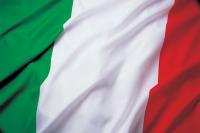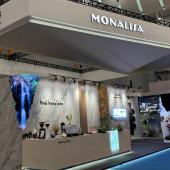2015 financial statements reveal boom in profitability of Italian tiles

Luca Baraldi, Acimac Research Center, [email protected]
The 3rd edition of the “Financial statement analysis of world ceramic tile producers” published by the Acimac Research Department / MECS in April this year provides a complete economic and financial picture of 325 ceramic tile producer companies operating in 42 countries worldwide for the three-year period 2013-2015. These include 88 companies in Italy, 75 in Spain, 38 in other EU countries, 31 in non-EU countries, 77 in Asia and 16 in other countries. The study compares each company’s performance with the average national and world profitability values and with those of the most similar companies in terms of management and results (cluster and benchmarking analysis).
The 2015 financial statements analysis of the 88 Italian companies shows that the industry has literally doubled its growth rate in the space of one year and is rapidly regaining the ground it lost during the 10-year crisis from which it is now emerging. Moreover, the trend does not appear to be slowing, with sales growing at a faster rate than other producer countries. Naturally this growth leadership position is particularly evident when compared with the stagnant trend in sales of Asian countries (Italian sample +8.6% compared to +2.9% for the Asian sample), although Italy also enjoys a considerable advantage over Spain (+6.3%) and even more significantly over other European countries (+5.2%).
The Italian results reveal a real boom in sales which continued in 2016. This acceleration does not appear likely to slacken at least within the next two years, as it is determined by structural factors. In 2015, investments in fixed and intangible assets saw overall growth (+4.4%), more than 1.5 percentage points higher than that of Spain and Asian countries (which however had previously been experiencing almost 20% growth). The process of employment restructuring continued in the sector amidst investments that at least in part are introducing labour-saving technologies, leading to a further reduction in the industry’s overall employment levels (-1.6%).
Return on investment (ROI) has grown by more than one percentage point (from 3.1% to 4.2%). Added value has also grown, both in relation to turnover and in the form of industrial gross productivity (added value per employee) and consequently the efficiency of production processes. In particular this includes leaner inventory management, as reflected by the further reduction of companies’ average stock inventory in 2015. The added value margin of ceramic tile producers, the first upstream indicator of gross margin in the value chain, saw a further half a percentage point increase between 2014 and 2015 to reach 32%, significantly higher than the figures for Spain (which for years has remained steady at around 30.8%) and for Asia (just under 29%).
Italy’s level of gross industrial productivity reflects the Italian industrial model that is now emerging from the recent years of restructuring, with large-scale investments in capital per employee and labour cost reduction leading to two different but equally positive phenomena.
On the one hand Italy has gained an absolute leadership position at a global level in terms of labour productivity (added value per employee stands at more than 91,000 euros, compared to the 68,000 euros of Spain, Italy’s leading European competitor). The second effect derives from the high intensity of investments associated with the reorganisation of labour. Capital per employee has risen to almost 414,000 euros, an increase of almost 40,000 euros per employee in the space of just two years. Italian companies maintain the highest level of total investments per employee of all ceramic tile producer countries. Spain’s average level of investments per employee stands at 321,000 euros, while that of Asian producers is 144,000 euros, although the figures are not entirely comparable due to the different industrial model which favours high labour-intensive production.
At the same time, Italy’s unit labour costs (ULC) fell by almost one percentage point in 2015 to drop below 20%. This is the real indicator of the competitiveness of Italian tile producers in terms of labour costs: although labour cost per employee is significantly higher than that of other competitors (and growing), the greater capital intensity and higher labour productivity more than offset the effect of salary adjustments and the high Italian tax burden.
Downstream profitability ratios (EBITDA margin, EBIT margin and net profit margin) grew by more than one percentage point to comfortably exceed the gross operating margins and profit margins of Spain and almost reach the profit margins of Asian companies.
Did you find this article useful?
Join the CWW community to receive the most important news from the global ceramic industry every two weeks





















